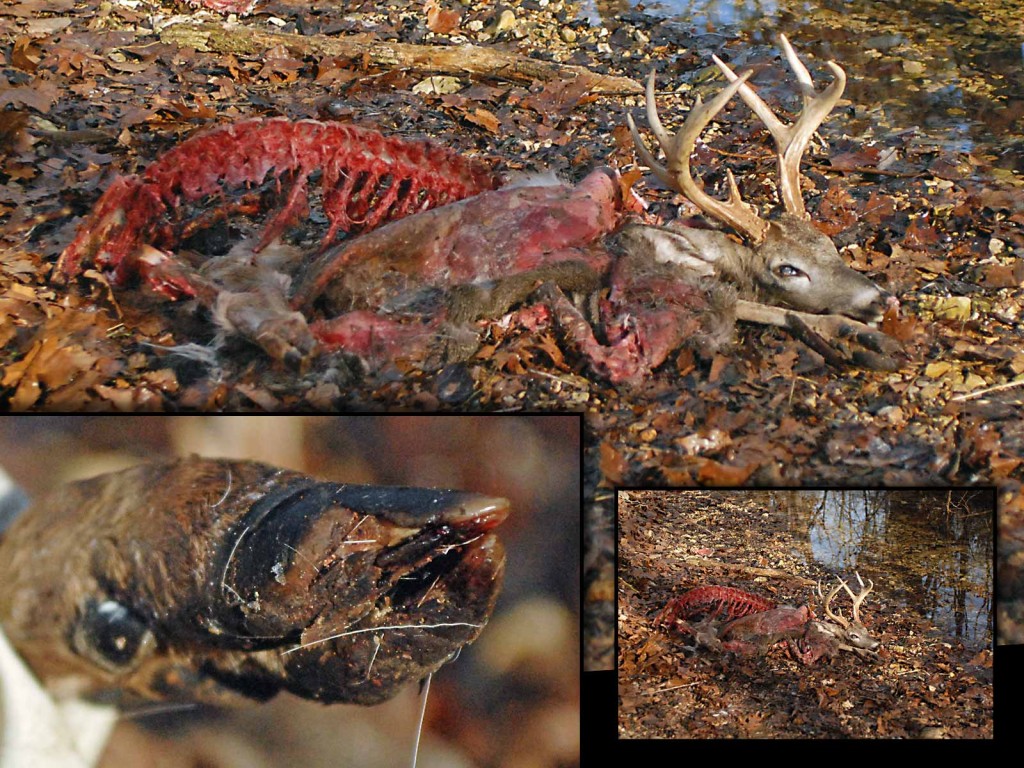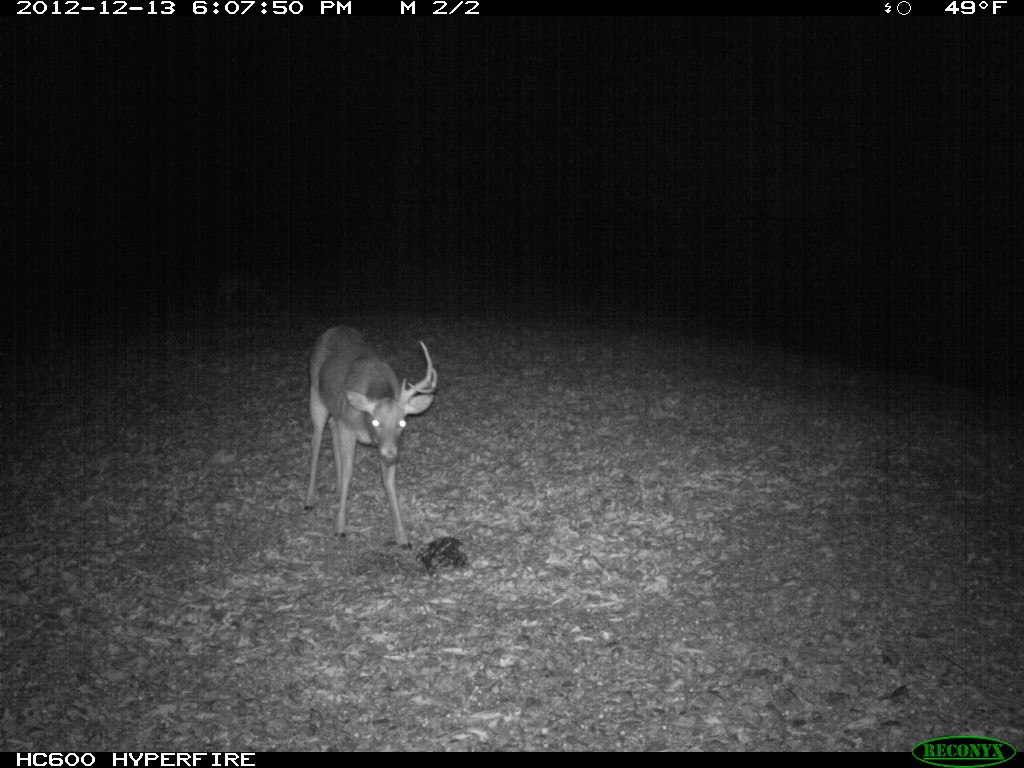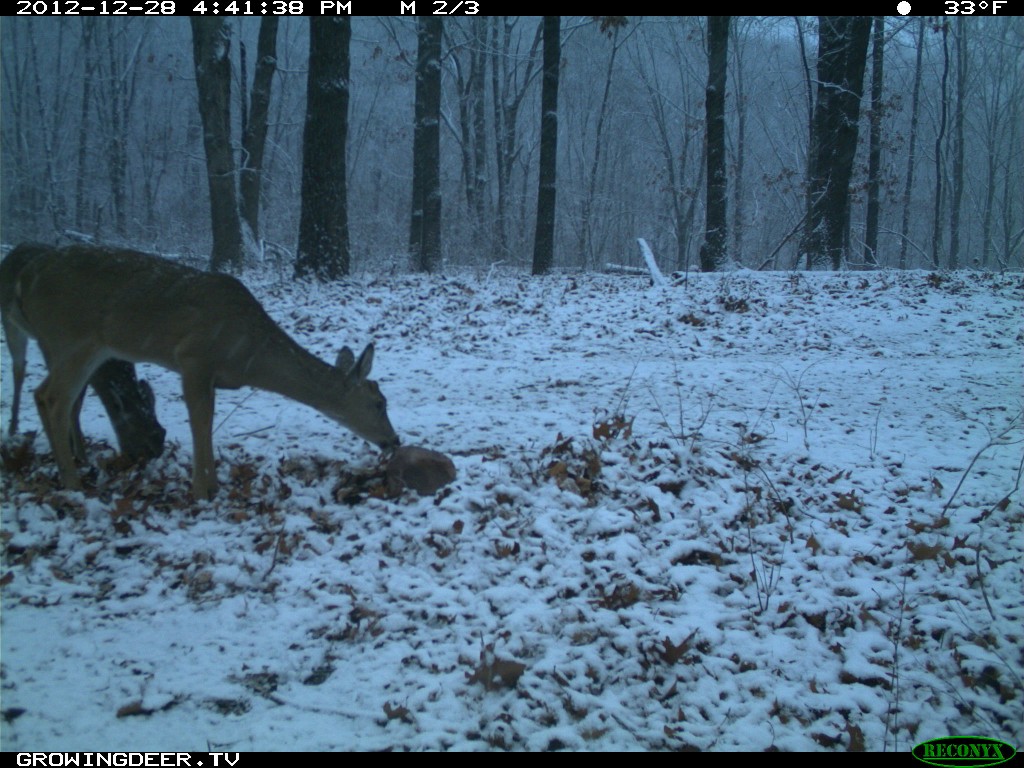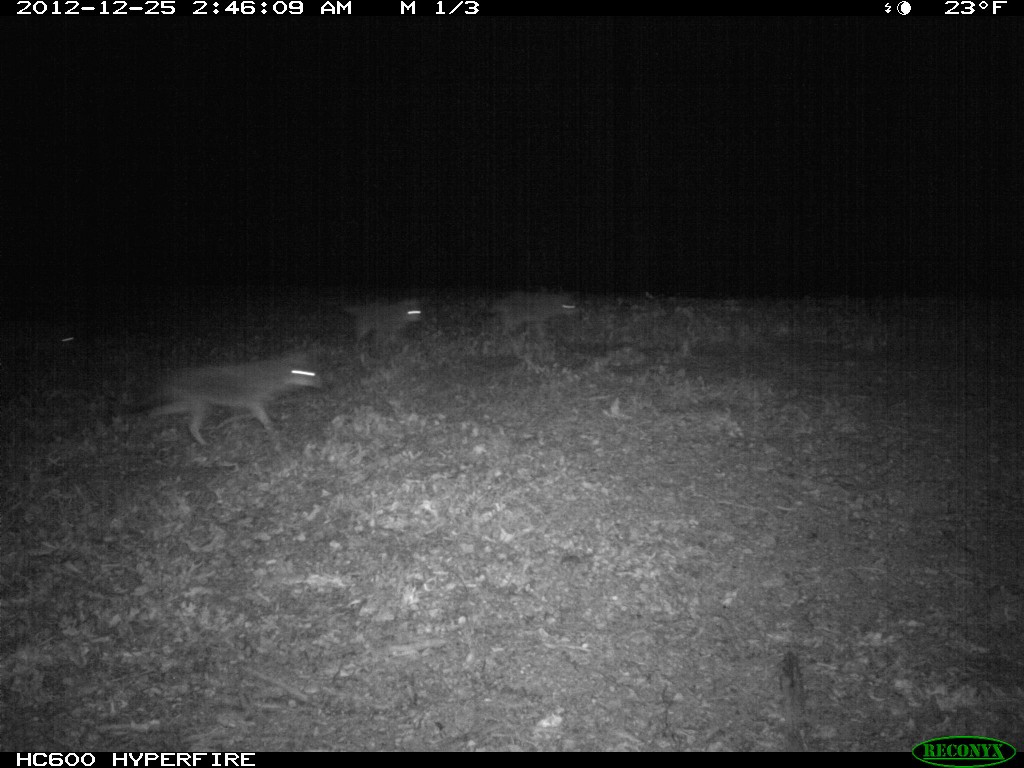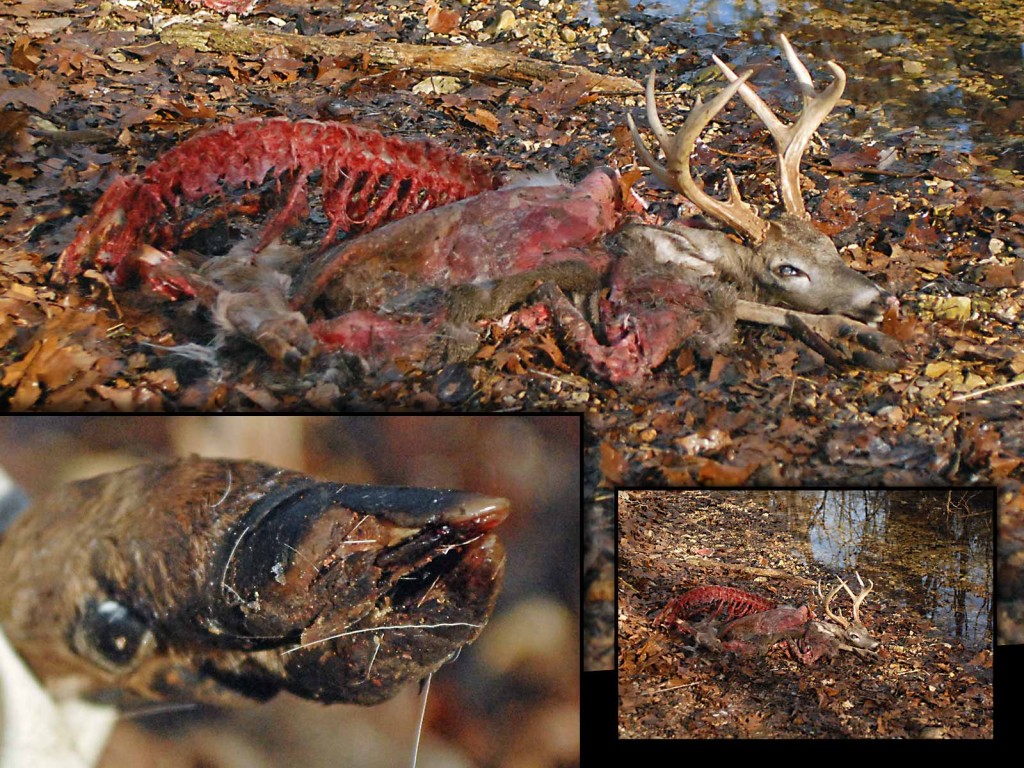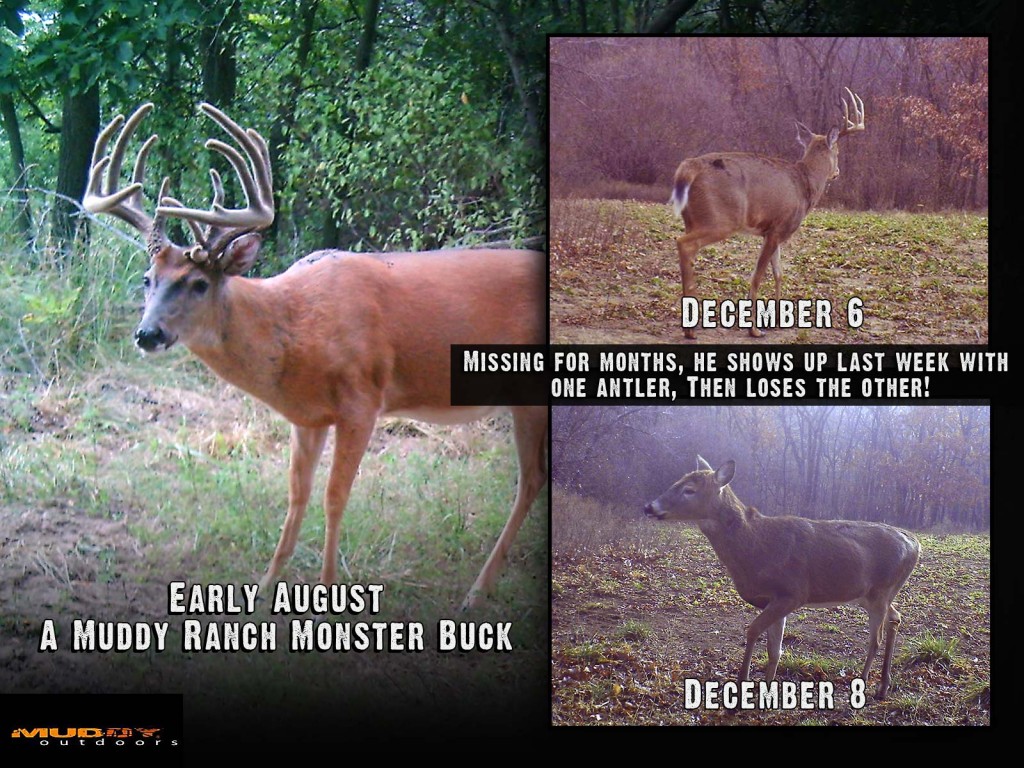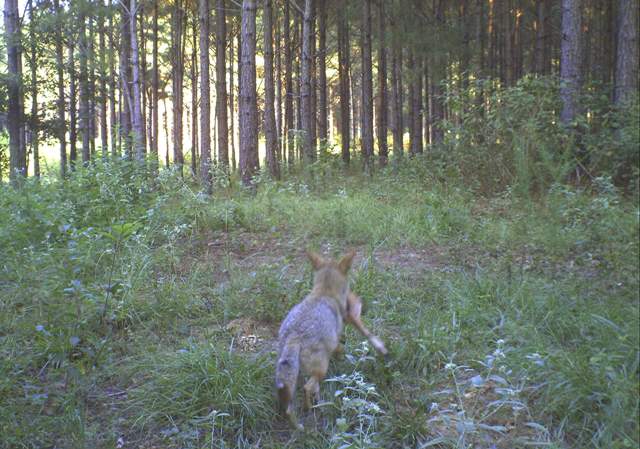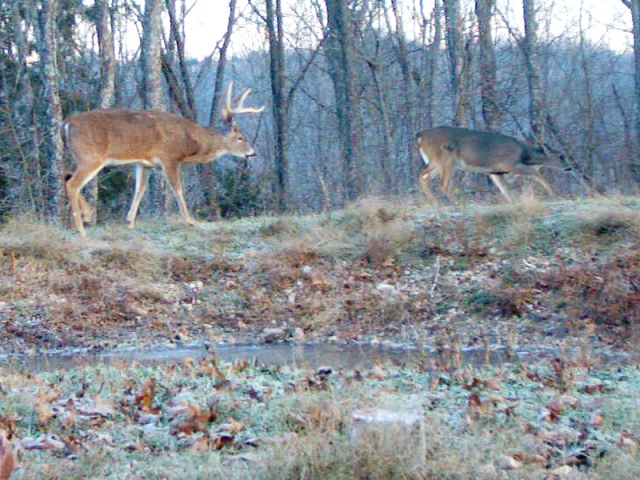Hunting Strategies: Studying Buck Behavior
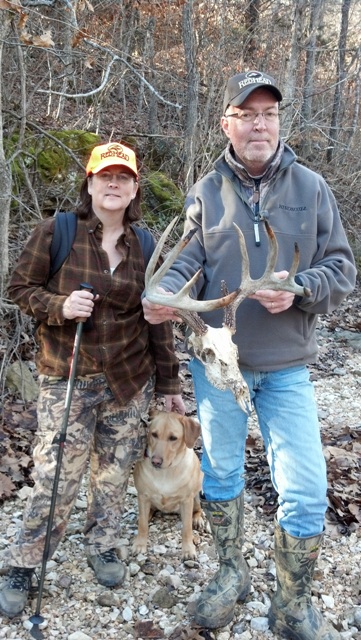
The buck had hard antlers when he died and the skull was totally clean – no tissue left anywhere on the skull.
Deer season is now closed in Missouri. I enjoyed a fun and successful season! However, I must admit that my wife Tracy and her lab, Crystal, have found almost as many inches of antler already this shed hunting season as I tagged during the season.
Yesterday Tracy found a shed from a buck I call Pitchfork. He probably dropped it last year. Pitchfork was a mature buck that I have in hundreds of Reconyx pictures. 90+% of the pictures were taken at night. That’s probably why I’ve never seen Pitchfork even though I’ve hunted him for years.
Based on research data from GPS collars placed on bucks, I’ve learned that each buck has a unique personality. Some seem to follow trends – just like humans, and some are loaners. The toughest to hunt are the loaners that tend to move only during the night. Pitchfork seems to be such a buck. Such bucks are very difficult to pattern and more difficult to hunt. My cameras haven’t taken a picture of Pitchfork in months. I don’t know if he’ll be around next season.
Today Tracy found a skull with a nice typical 10 frame. The top jaw (we couldn’t find the bottom jaw), and antler bases indicate the buck was three or four years old. Estimates based on the top jaw are not as accurate as those based on the bottom jaw. The buck had hard antlers when he died and the skull was totally clean – no tissue left anywhere on the skull. I suspect the buck died last year. I believe this was a buck we called Clover Mountain 10.
Knowing all this, I opted to focus my hunting time on a buck I called The Trashman. I knew from trail camera pictures and my observations that The Trashman tended to be more active during daylight hours than most bucks at The Proving Grounds. These observations proved true as I had several encounters with The Trashman this year and tagged him during late December (watch GDTV 163).
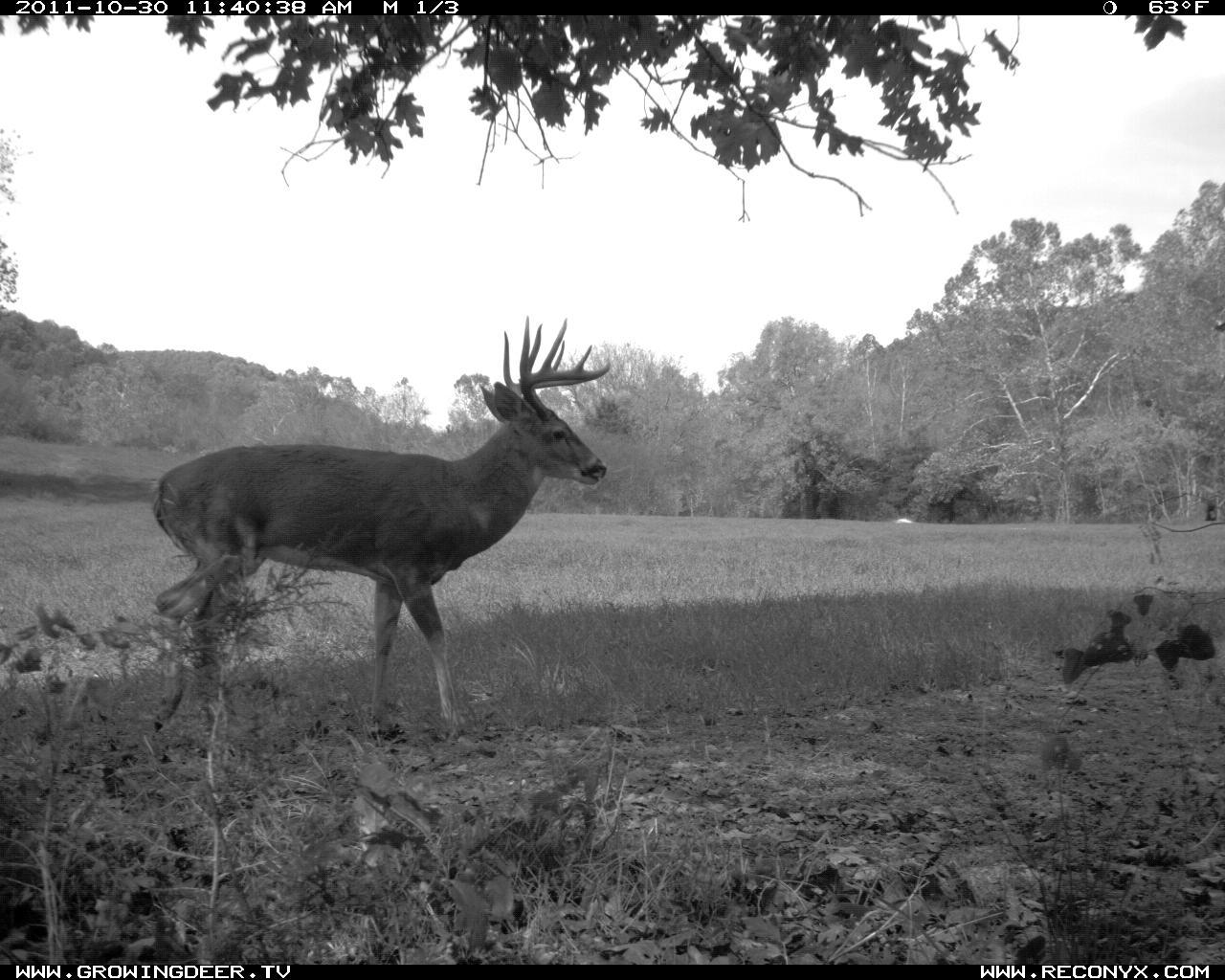
I use trail cameras to study the behavior of bucks. I then decide which bucks I’ll hunt based on their maturity and behavior.
As you begin planning for the next hunting season, don’t forget to use your trail cameras year round. Study the behavior and patterns of the bucks using the property where you hunt. Don’t simply count points and estimate their age. By studying their behavior, you can focus your hunting time on bucks that tend to be more active during daylight hours and increase the odds of tagging a mature buck.
By studying now, you will significantly increase your odds next season.
Growing Deer together,
Grant



